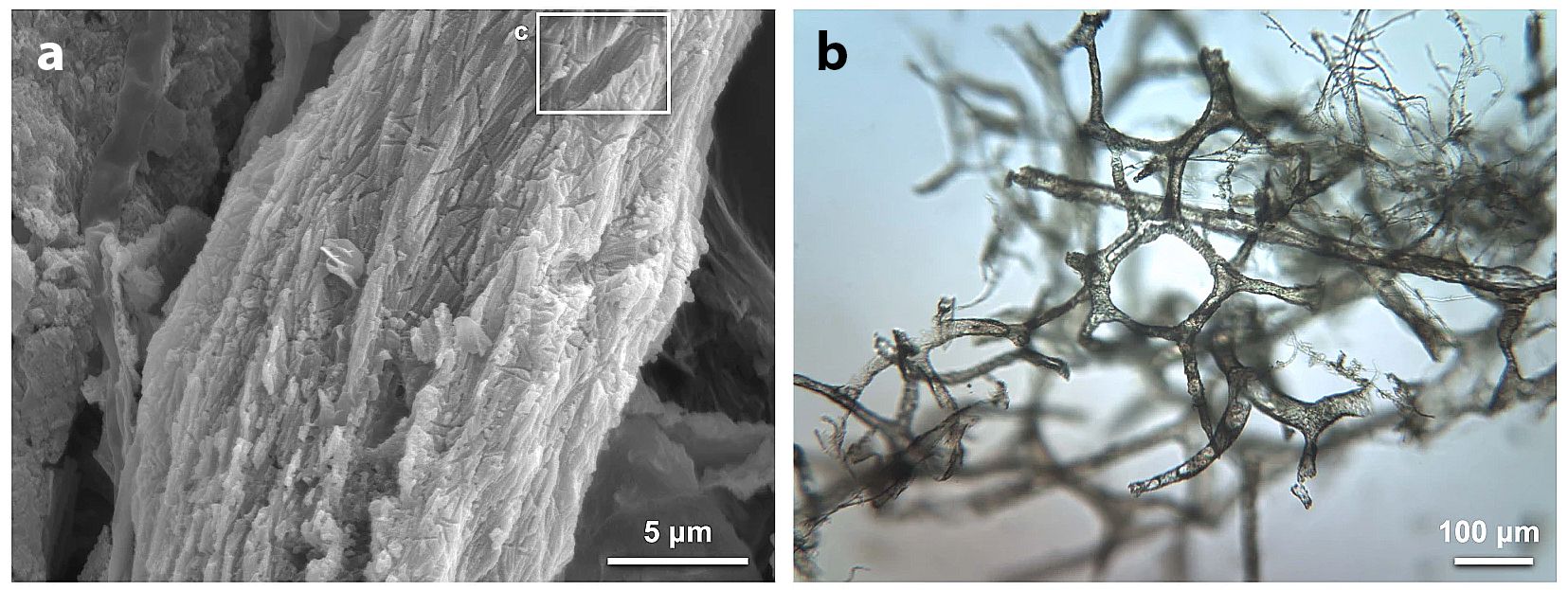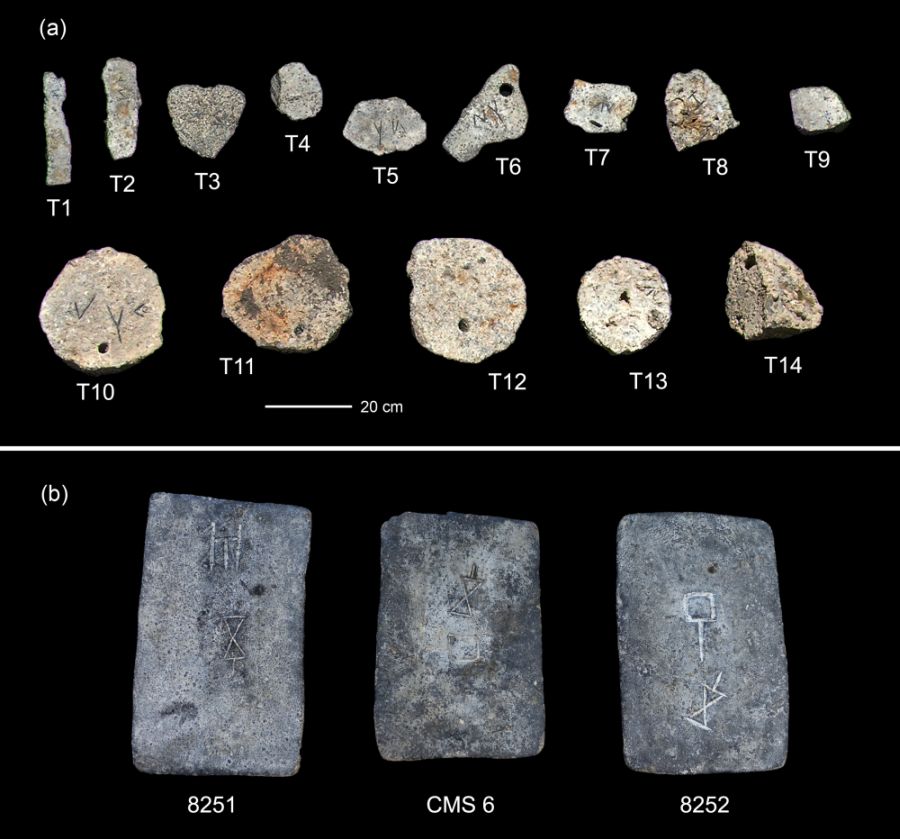Focus: creation news and views 42(2)
Half brain, but not halfwit

Scientists conducted a study on the brains of six adults who had undergone surgical removal of one cerebral hemisphere (hemispherectomy) in childhood. The “brain regions involved in the same network (such as vision) worked together just as well as those in healthy patients who had their entire brains intact.” As Saplakoglu commented, “… the authors found that connectivity—and thus communication—between parts of different networks are actually stronger in patients who had a hemisphere removed. In this way, it seems the brain is able to compensate for the loss of brain structure, the authors said.”
The study authors also noted that “Language function has been studied in some detail, also showing near-complete recovery in many patients who had their language-dominant hemisphere resected [cut out]”.
So, where does this ‘overdesign’ or ability to compensate come from, if not from an intelligent creator? How could natural selection, a supposed mechanism that thrives on eliminating the unfit and weak, create such a compensatory process in the brain? After all, there would not have been any half-brain ‘hominids’ (ape-men) to select for on the African savannah, or wherever other such just-so story is invoked.
- Saplakoglu, Y., How the brain still works when half of it is missing; livescience.com, 22 Nov 2019.
- Kliemann, D. et al. Intrinsic functional connectivity of the brain in adults with a single cerebral hemisphere, Cell Reports, 29:2398–2407, 19 Nov 2019.
Tribal people come to Christ—via creation evangelism
Ethnos360 (formerly New Tribes Mission) reported on the conversion to Christ of many of the Menya people in Papua New Guinea. Wes and Penny Campbell and Joseph and Elizabeth Osborn had worked for years learning the difficult language of the Menya people, creating literacy programs, and developing the chronological teaching program in the heart language of the people. They began at creation, and taught how Adam and Eve sinned, bringing the subsequent sin nature upon their descendants, and the wrath of God towards sinners (the Flood, Tower of Babel, etc.).

The Menya people knew nothing about God, but as they learned biblical history, they believed in Him and feared Him. They realized they were hopeless in their sin, deserving of death, but anticipated that hope was coming. “God himself must fix our sin nature”, said one lady.
When they heard the Good News that Jesus had taken the penalty for their sin, cancelling their certificates of debt and death (Colossians 2:13–14), they received it gladly. The Menyan church was born.
The mission’s experience with other tribes shows that conversions resulting from such an approach are deep, genuine and long-lasting. This is the power of ‘creation evangelism’, as the Apostle Paul used it in Acts 17:22 ff. Like these tribal people, many in ‘first-world’ countries today are ignorant of the things of God. Thus we need to return to this biblical model—beginning with creation—for evangelizing people who are not ‘God-fearing’.
- Ethnos360 Magazine 81(3):4–11, 2018; ethnos360.org.

‘Comeback’ of tiny knee bone
There are typically 206 bones in the adult human skeleton, but this number may be larger in some individuals due to extra ‘sesamoid’ bones. These develop inside tendons, when soft tissue turns into bone, caused by mechanical stress on the tendon. The patella (kneecap), present in everyone, is the largest and best-known sesamoid bone. The fabella is a sesamoid bone found in the tendon of the gastrocnemius (calf) muscle of some humans, located at the outer knee.
One report claimed that this “tiny bone hidden in the tendon of the knee started to disappear over the course of human evolution … or so scientists thought.” A study by Berthaume et al. concluded there has been a 3.5 times increase in the prevalence of the fabella in humans over at least the last 100 years. The researchers attributed the increase to the global increase in human height and weight, due to improved nutrition. In other words, its increase or decrease has nothing to do with evolution!
- Berthaume, M.A. et al., Fabella prevalence rate increases over 150 years, and rates of other sesamoid bones remain constant: a systematic review, J. Anatomy, 17 Apr 2019.
- Saplakoglu, Y., This tiny knee bone had nearly vanished as humans evolved. It’s coming back; livescience.com, 19 Apr 2019.
Well-preserved dinosaur a “scientific goldmine”
An incredibly complete and remarkably well-preserved dinosaur has been described by renowned palaeontologists Philip Currie and David Evans. About the size of a German shepherd dog, the skeleton is the only nearly complete specimen of Saurornitholestes langston and was preserved intact, except for the tail.

“Because of their small size and delicate bones, small meat-eating dinosaur skeletons are exceptionally rare in the fossil record. The new skeleton is by far the most complete and best-preserved raptor skeleton ever found in North America. It’s a scientific goldmine”, Evans said. “It’s even three-dimensionally preserved, I mean, it almost looks like it could start breathing.”
The paper focused on the dinosaur’s skull, claiming that a flat tooth with long ridges “was likely used for preening feathers”. They clearly wished to promote the evolutionary story that dinosaurs evolved into birds, even though no feathers were found on this specimen or any previous specimen of this species.
But what could account for the fossil’s exquisite preservation? Such conditions can be understood from Genesis. During the global Noahic Flood some 4,500 years ago, huge swathes of mud carried in the water would rapidly bury billions of animals in sedimentary layers.
- Currie, P.J., & Evans, D.C., Cranial Anatomy of New Specimens of Saurornitholestes langstoni (Dinosauria, Theropoda, Dromaeosauridae) from the Dinosaur Park Formation (Campanian) of Alberta, The Anatomical Record, 9 Sep 2019.
- Willis, K., Paleontologists discover complete Saurornitholestes langstoni specimen; sciencedaily.com, 17 Oct 2019.
- Tucker, A., Scientists thought a dinosaur was a relative of the velociraptor. Then a near-complete set of its bones was found in Alberta; thestar.com, 11 Oct 2019.
Out of Africa and dating confusion

Creation magazine (41(2):22–25) highlighted that the Out of Africa model (OoAM) of human evolution is in crisis. Subsequently, a study by a group of paleoanthropologists, on two fossilized human crania from Greece, reported that the modern-type cranium (Apidima 1), ‘dated’ to around 210 thousand years ago (ka), lived about 40,000 years earlier than the Neandertal-like Apidima 2 cranium. Hence, Homo sapiens appeared in Europe supposedly over 150,000 years earlier than thought. Not giving up on the OoAM altogether, the authors said their “findings support multiple dispersals of early modern humans out of Africa.”
However, the dating of the crania is as confused as the OoAM. The two crania were found embedded in the same breccia, separated by a few inches, yet were ‘dated’ 40,000 years apart! They were initially dated to the same age (over 160 ka), but the difference in morphology led to doubts they were the same age (circular reasoning). Josh Davis quoted co-author Chris Stringer as saying: “When we submitted the first draft of our paper for possible publication, the reviewers were naturally sceptical that there was a modern human fossil from Greece found alongside an early Neandertal fossil, with both of them dating from at least 160,000 years ago.”
According to Stringer, they then “conducted further analyses and dating work, which produced even more surprises” (i.e. the dating results in our first paragraph).
However, the dating was far from convincing, as described by Lizzie Wade: “Warren Sharp, a uranium dating expert at the University of California, Berkeley, points out that the Apidima 1 samples actually returned dates ranging from more than 300,000 years old to less than 40,000 years old.” Wade quotes Sharp as saying “You have this huge spread of apparent ages, and you don’t know if any of them are any good.” Indeed so.
- Harvati, K. et al., Apidima Cave fossils provide earliest evidence of Homo sapiens in Eurasia, Nature 571:500–504, 10 Jul 2019.
- Wade, L., Was our species in Europe 210,000 years ago? Science 365:111, 2019.
- Davis, J., Modern humans may have been in Europe 150,000 years earlier than thought, nhm.ac.uk, 10 Jul 2019.
Springy animals provide inspiration

Engineers from Purdue University, Indiana, have created a new class of fast-acting soft robots that can catch live insects in the blink of an eye. They took their inspiration from the sticky catapult tongues of chameleons (cf. creation.com/chameleon), salamanders, and toads. These can rapidly extend up to one and a half body lengths, catching insects within a tenth of a second. They do this by using stored elastic energy which when released allows for fast, high-powered movements.
The team replicated the movements in the bio-inspired soft robots which are made using stretchable polymers similar to rubber bands, with internal hollow tubes that expand upon pressurisation. The polymer is pre-stretched and moves in different ways depending on the amount of air pressure applied.
The robot tongue can expand five times its own length, excelling at gripping, holding, and manipulating objects at high speed, even holding objects up to 100 times its weight. Professor Ramses Martinez said these new prestressed soft robots have several significant advantages over existing soft robots:
“We believed that if we could fabricate robots capable of performing such large-amplitude motions at high speed like chameleons, then many automated tasks could be completed more accurately and in a much faster way. Conventional robots are usually built using hard and heavy components that slow down their motion due to inertia. We wanted to overcome that challenge.”
In taking their inspiration from chameleons, salamanders, and toads, they are only seeking to replicate what has already been created by the Master Designer.
- Pal, A. et al, Elastic energy storage enables rapid and programmable actuation in soft machines, Advanced Functional Materials, 25 Oct 2019.
Cows found alive on island months after storm sweeps them out to sea

Three cows have been discovered grazing peacefully in the Outer Banks National Park, on a barrier island in North Carolina, USA. This discovery is amazing because, on 6 September 2019, they had been swept out towards the Atlantic Ocean in a storm surge during Hurricane Dorian. The three cows, discovered alive a couple of months later, had been part of a larger group of around 20 wild cows and 28 wild horses that lived on Cedar Island, about 6–8 km (4–5 miles) away, when a 2.5 m (8 ft) mini-tsunami hit. The rest of the animals sadly did not survive. These sea-surfing cows made an amazing journey between the islands in open water, aided by their swimming ability.
This provides an example of how some animals may have ended up in their current locations when dispersing around the world after the Noahic Flood. With an Ice Age directly after (and caused by) the Flood, the oceans were lower. This meant more exposed land, and narrower stretches of open water between land masses than at present.
Animals have been observed to have rafted across the ocean on vegetation torn off during storms. As the cows (since returned to their home island) showed, storm surges provide a further mechanism for the transportation of creatures across deep-water passages without any flotation aids.
- Price, M., Cows swept out to sea by Hurricane Dorian are found months later—on the outer banks; charlotteobserver.com, 12 Nov 2019.
More stunning dinosaur soft tissue

Dr Mary Schweitzer, renowned for discovering intact soft tissue plus blood and bone cells in dinosaur fossils, has taken part in new research which has provided further examples. Hollow and pliable blood vessel structures (microvascular tissue) were recovered (image a) from the bone of a Tyrannosaurus rex.
“At higher magnification the vessel exteriors were … exhibiting features morphologically consistent with fibrillar collagen” (image b).
The proteins identified included type I collagen, elastin, actin, tropomyosin, and hemoglobin, similar to proteins in vertebrates alive today.
It was hoped the study would provide insight as to how they could have survived for ‘66 million’ years. The authors admitted: “The identification of still-soft tissues and cellular structures in a suite of Mesozoic [252–66 alleged million years ago] fossils and claims of endogenous proteins [i.e. not derived from outside sources in modern times] preserved within these materials, is controversial because it challenges both conventional wisdom and theoretical kinetics, which preclude the persistence of proteins over geological time scales. Data supporting endogeneity have been viewed with scepticism, in part because no mechanisms have been identified that could reasonably contribute to such preservation.”
Despite the overwhelming evidence that continues to accumulate of intact proteins in dinosaur fossils, “scepticism” persists because of the “conventional wisdom” that these fossils are millions of years old. Calculations from known chemistry show the proteins should have fallen apart long ago, and no “mechanisms” are known to prevent that.
This material consistently points to the truth of the Bible’s history; the bones belong to creatures rapidly buried in Noah’s Flood some 4,500 years ago.
- Boatman, E.M. et al, Mechanisms of soft tissue and protein preservation in Tyrannosaurus rex, Sci. Rep. 9, 15678, Oct 2019.
Bizzare attempt to explain consciousness

Trying to explain consciousness and its origin in a purely naturalistic world has been called the greatest scientific challenge of our time. It involves our awareness of ‘self’ and the world around us. Being able to contemplate the meaning of our existence, to appreciate beauty, to love, create, have a sense of humour, pray, worship, and much more—all of these complex thoughts and emotions are claimed to “emerge from a grey, jelly-like lump of tissue” which is supposed to have evolved from unfeeling, unthinking matter over billions of years.
The brain is the most complex organ in the human body, but researchers are aware that its complexity in and of itself does not explain consciousness, which is considerably more than mere matter.
In attempting to explain this, Dr Philip Goff, Department of Philosophy, Durham University, has suggested what he calls a new form of ‘panpsychism’. He claims that consciousness is a fundamental and ubiquitous feature of the physical world. He states “There is only matter—nothing spiritual or supernatural—but matter can be described from two perspectives. Physical science describes matter ‘from the outside’, in terms of its behaviour, but matter ‘from the inside’ is constituted of forms of consciousness”. What he is claiming is that while the mind is matter, all matter, “even elementary particles [including an electron!] [could] exhibit incredibly basic forms of consciousness”. While he admits that his new idea is not testable, it sounds much more like a lazy sidestep to avoid explaining consciousness in humanity, and instead just glibly say that everything has it in some form.
The Bible is clear that humans have an immaterial (spiritual) component which interacts with the material, and which has its origin not in any inherent property of matter, but in supernatural divine creation. Jesus clearly warned that we should “not fear those who kill the body but cannot kill the soul. Rather fear him who can destroy both soul and body in hell” (Matthew 10:28).
- Goff, P., Why can’t science explain consciousness? Livescience.com, 11 Nov 2019.
3,000-year-old tin ingot trade route discovered between Britain and Israel

More than 3,000 years ago (c. 1500–1300 BC), tin ingots were being sent from mines in the south of England to Israel. Tin is a valuable commodity, used to form bronze when combined with copper. Researchers examined 27 tin ingots found in five different locations, mostly shipwrecks off the coast of Israel. Identifying specific trace elements and isotopes in the ingots produced unique ‘ingot fingerprints’. These pointed to tin ores from Cornwall as the most likely sources.
The first time the Bible mentions bronze is in Genesis 4:22, regarding Tubal-Cain, who was only 7 generations after Adam, and “was the forger of all instruments of bronze and iron”. He would have had to be intelligent and resourceful to be able to locate the mineral cassiterite (the main ore of tin) and extract the tin from it by roasting it in a furnace before adding it to copper to fashion instruments. Clearly, this pre-Flood knowledge was retained post-Flood and carried throughout the world by Noah’s descendants after the Babel dispersion. The Ice Age which came directly after the Flood, some 4,500 years ago, would have covered Britain in a layer of ice for about 500–700 years meaning that it would likely have been settled sometime after 1,800 BC. This would allow time for the newly established community there to identify tin deposits and begin to extract it before trading with communities such as Israel in the Middle East, from where they had dispersed. The results are consistent with the biblical history of an intelligent humanity establishing itself in the post-Flood world.
- Berger, D. et al, Isotope systematics and chemical composition of tin ingots from Mochlos (Crete) and other Late Bronze Age sites in the eastern Mediterranean Sea: An ultimate key to tin provenance? PLoS ONE 14(6), June 2019.
‘Bipedal’ ape sinks human evolution theory

Böhme et al. recently described the ‘bipedal’ (upright-walking) baboon-sized fossil ape Danuvius guggenmosi from Bavaria, Germany. It is claimed to be over 11 million years old in the evolutionary timescale, which would mean that bipedalism existed millions of years earlier than the first supposed ‘ape-men’ (aka hominins). Given that evolutionists use bipedalism to assign fossils to the ‘hominin’ lineage, this finding devastates their argument that the australopiths (e.g. ‘Lucy’) were ‘apemen’ because they may have been bipedal in some way.
The finding is a real blow to the idea that bipedalism equals ‘ape-man’. I.e., if apes/primates in Europe (and there are now several, e.g. Danuvius guggenmosi, Rudapithecus hungaricus and Oreopithecus bambolii) were built for some form of bipedalism, yet are not regarded as ape-men, then why would bipedal features in the australopiths from Africa mean they were ape-men?
On the locomotion of D. guggenmosi, Kivell wrote that the authors interpreted the shape of the “fossils as indicating a type of previously unknown movement that they term extended limb clambering, which combines adaptations of both suspension in the trees and bipedal locomotion.” Today’s orangutans can also move bipedally in trees, though not habitually. Thus, the ability to walk bipedally (though not necessarily in the same way as humans) appears to have been a useful designed method of movement for some extinct tree-dwelling primates.
- Böhme, M. et al., A new Miocene ape and locomotion in the ancestor of great apes and humans, Nature 575:489–493, 6 Nov 2019.
- Kivell, T.L., Fossil ape hints at how bipedal walking evolved, Nature, 575:445–446, 6 Nov 2019.


Readers’ comments
Comments are automatically closed 14 days after publication.